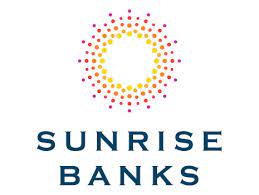Planning for Retirement

Planning for Retirement
Unfortunately, Social Security’s assets are being rapidly consumed and the number of workers supporting it is shrinking. For us, this means we will have to rely heavily on our personal savings when the time for retirement finally comes.
While there are a number of options to help each of us create a retirement investment strategy, most of us have yet to actually take advantage of them to create a personal plan of action. Waiting until the last minute can add a lot of unnecessary stress to our lives – preparing now will increase the likelihood that you will enjoy yourself when the time for retirement arrives.
To illustrate the point, the following chart shows the future growth potential of saving $100 per month in a tax-deferred retirement account, over a number of years and with different rates of return.
| ACCUMULATION OF $100 PER MONTH | ||||||
| Rate of Return |
Number of Years | |||||
| 5 | 10 | 15 | 20 | 25 | 30 | |
| 5% | 6,801 | 15,528 | 26,729 | 41,103 | 59,551 | 83,226 |
| 6% | 6,977 | 16,388 | 29,082 | 46,204 | 69,299 | 100,452 |
| 7% | 7,159 | 17,308 | 31,696 | 52,093 | 81,007 | 121,997 |
| 8% | 7,348 | 18,295 | 34,604 | 58,902 | 95,103 | 149,036 |
| 9% | 7,542 | 19,351 | 37,841 | 66,789 | 112,112 | 183,074 |
| 10% | 7,744 | 20,484 | 41,447 | 75,937 | 132,683 | 226,049 |
BUILDING YOUR RETIREMENT INVESTMENT
It is important to understand that unless you plan on retiring within the next 5-10 years, even the most well-researched and plotted estimates aren’t going to be very meaningful. None of us can accurately predict what our lifestyle, taxes or health benefits will cost, or what our investments will earn. However, creating a very rough estimate of how much and where your money will be spent is a critical first step in creating your plan.
COSTS TO CONSIDER IN RETIREMENT
Housing
Necessities (groceries, clothing, etc.)
Income Taxes
Health Care
Other Insurance (homeowners, renters, etc.)
Transportation (car payments, gas, insurance, maintenance)
Leisure Activities (hobbies, travel, entertainment)
Other Expenses (charities, gifts, etc.)
If, for example, you estimate that your retirement monies should be $500,000, the following chart indicates how much you would have to save, or invest, monthly, at a 10% tax-deferred annual rate of return. Note that this chart does not reflect the effect of taxes.
| Years to Retirement | Savings Required Monthly | Savings Required Annually |
| 50 | $28.62 | $343.44 |
| 40 | 79.41 | 952.92 |
| 30 | 219.36 | 2,632.32 |
| 20 | 653.00 | 7,836.00 |
| 10 | 2,420.70 | 29,048.40 |
Don’t let this chart scare you. Even if you are within 10 years of retirement and have not started investing, there are several options available to you (depending on age and income) which will allow you to create a strong investment for the future.
Regardless of how many years you have until retirement, the most important thing to remember is that any savings, however modest, will help.
INDIVIDUAL RETIREMENT ACCOUNTS
The Individual Retirement Account (IRA) offers two powerful benefits: 1) compound interest, and 2) tax savings. Most importantly, there is no minimum or required IRA contribution, and all earnings on the amounts in an IRA are untaxed until withdrawn (unless withdrawn before the age of 59 ½). In the case of the Roth IRA, withdrawals may even be tax-free provided certain minimum rules are met.
Following are some of the more commonly used of the eleven types of IRAs available. To determine which is right for your situation, we advise you to contact your financial and tax advisor for additional information.
Traditional IRAs
The traditional IRA allows you to contribute an amount annually (up to the amount listed in the chart below) and enjoy a reduction to your adjusted gross income (AGI.) For example, if your AGI is $55,000 and you made a contribution of $3,000 to a traditional IRA, you will only be taxed on $52,000 of your earnings.
When you withdrawal the amount at or after age 59 ½, you are taxed based on your current tax bracket which presumably will be significantly less. Individuals age 50 and over are also permitted to make additional “catch-up” contributions. The additional contribution is $1,000 for 2006 and beyond.
| Tax Year | Under age 50 | Age 50 or Older |
| 2001 | $2,000 | $2,000 |
| 2002-2004 | $3,000 | $3,500 |
| 2005 | $4,000 | $4,500 |
| 2006-2007 | $4,000 | $5,000 |
| 2008 | $5,000 | $6,000 |
| 2009-2010 | $5,000 indexed | $5,000 indexed plus $1,000 |
However, to enjoy the full deduction, your AGI must fall at or below the first of the two numbers shown on the chart below. In the range between the numbers, the maximum deductible amount phases out. Additionally, if you or your spouse are covered by a qualified retirement plan (a defined benefit or contribution plan provided by an employer – 401(k), money purchase pension plan, profit sharing plan), different AGI limits apply.
|
Year |
Joint Returns(AGI) |
Single Returns(AGI) |
| 2003 | $60,000-70,000 | $40,000-50,000 |
| 2004 | $65,000-75,000 | $45,000-55,000 |
| 2005 | $70,000-80,000 | $50,000-60,000 |
| 2006 | $75,000-85,000 | $50,000-60,000 |
| 2007+ | $80,000-100,000 | $50,000-60,000 |
Roth IRAs
With a Roth IRA, there is no AGI limit but there also is no tax deduction – rather, your earnings on the amounts from the investment will be tax exempt upon withdrawal.
For example, you can make $150,000 and still contribute (based on the IRA contribution chart on the preceding page) to a Roth IRA. While your taxable earnings are not reduced, when you are 59 ½ or older and choose to withdrawal your funds, none of the gains will be taxed.
As in the case of a traditional IRA, there are rules governing income amounts for single or joint filers.
Generally, you can contribute up to the amount in the IRA chart per year to a Roth IRA if you have earned income of amounts shown or more and your adjusted gross income does not exceed $150,000 for joint filers or $95,000 for single filers (contributions are phased out between $150,000–$160,000 for joint filers and $95,000–$110,000 for single filers).
However, it is important to note that any contribution made to a traditional IRA by the same taxpayer reduces the dollar amount permitted per year available for a Roth IRA contribution, dollar-for-dollar.
The tax appeal of Roth IRAs is the opportunity to receive tax-free earnings, provided the withdrawal of earnings is five taxable years after establishing the Roth IRA and the withdrawal is made:
On or after age 59½,
After the death of the owner,
On account of the owner’s becoming disabled, or
For qualified first-time home buyer expense (up to $10,000).
There are additional benefits, penalties, requirements and conversion possibilities that apply to the Roth IRA – we advise you to consult with a financial and tax advisor for further information.
Spousal IRAs
A Spousal IRA is either a traditional or Roth IRA funded by a married taxpayer in the name of his or her spouse who has less than $2,000 in annual compensation. To be eligible, the couple must meet the following requirements:
Be married
One spouse must have compensation or earned income
A federal tax return must be filed
An IRA must be established for the non-compensated spouse
With a Spousal IRA, there is the potential for twice the allowed amount to be contributed to the couple’s IRA(s) depending on their taxable income. Again, there are additional rules that govern the Spousal IRA including the type of IRA (Roth/traditional), the couple’s combined earned income, adjusted gross incomes, etc., which should be carefully reviewed with your financial and tax advisor.
Simple IRAs
SIMPLE stands for Savings Incentive Match Plan for Employees. The SIMPLE-IRA is a tax-deferred retirement plan provided by sole proprietors or small businesses (fewer than 100 employees) who do not maintain or contribute to any other retirement plan. Contributions are made by both the employee and the employer.
The taxation of SIMPLE IRA plans is the same as under a traditional IRA; generally contributions are taken pre-tax, reducing your taxable salary. Both the contributions and earnings can grow tax-deferred until they are withdrawn.
| Year | Contribution Amount |
| 2006 | $10,000 |
| 2007 | $10,500 |
| 2008 | (Indexed) |
| 2009 | (Indexed) |
|
Limit to be indexed for inflation |
|
Limit to be indexed for inflation
Individuals age 50 and over are also permitted to make additional “catch up” contributions.
EMPLOYER- BASED AND SELF-EMPLOYED PLANS
401(k) Plans
Almost everyone will agree that 401(k) plans are one of the best retirement savings opportunities available. In a nutshell, a 401(k) plan is an employer-sponsored deferred compensation retirement savings plan – for employees. Employees determine how much of their salary to defer and how to invest the money.
For many employees, these plans include a “match” by the employer – a contribution to the employee’s savings plan that will become the employee’s after a pre-defined period of employment with the employer. These plans are commonly referred to as SIMPLE 401(k) plans.
401(k) INVESTMENT ADVANTAGES
Immediate tax savings on contributions.
Tax-deferral of any investment earnings.
In-service loans and withdrawals.
Similar to a traditional IRA, when you defer your compensation into a 401(k) plan, your taxable income is generally reduced by the amount you contribute to this plan.
Another feature of some 401(k) plans is that employees can borrow from this retirement account. Generally, you may borrow the lesser of $50,000 or half of the present value of your account (less any unvested funds). It is advised, however, that you borrow only as a last resort. If the “loan” is outstanding and the employee chooses to change jobs, that loan will be must be repaid within five years — with interest.
The exception (with some plans) is when the loan is used within a reasonable period of time to acquire a principal residence. If the employee cannot repay the loan, the loan will be deemed an “early distribution” and will be taxed accordingly – with an additional 10% penalty.
403(B) Plans
Somewhat similar to the 401(k), the 403(b) is a tax-deferred retirement program that can only be established for employees of public education systems, not-for-profit hospitals and other charitable organizations.
Keogh Plans
Keogh plans are tax-deferred retirement savings for people who are self-employed. Usually, 25% of your earned income with a maximum of $40,000 per year can be contributed on a tax-deferred basis. Keogh plans are, however, more complicated to set up than IRAs. To make sure your plan is properly implemented, be sure to get tax advice before the plan is set up.
ANNUITIES
Simply put, an annuity is an income stream – it converts an accumulated sum of money into a series of payments over a number of years or a lifetime. A deferred annuity allows you to accumulate money for retirement on a tax deferred basis. Although contributions made now will not reduce your current taxable income, taxes on interest and earnings are postponed until you begin receiving your payments.
There are two basic types of deferred annuities – fixed and variable:
A fixed annuity means that when the annuity is purchased, the initial interest rate is set. While this can protect you from any downturns in the market, it doesn’t allow you to take advantage of possible market upswings.
With a variable annuity, the purchaser determines how the premiums will be invested. These earnings will fluctuate based on the investment results and, as a result, the account value may increase or decrease. There is no guarantee as there is with a fixed annuity, although most variable annuities guarantee at least the principal if you die, regardless of investment results.
Ordinary income taxes on earnings are generally due upon withdrawal. Withdrawals prior to age 59½ may be subject to a 10% tax penalty.
Wrapping Up
As you can see, there are several retirement investment vehicles for you to take advantage of – a strategic combination of several could provide you with a maximum tax benefit, depending on your situation (existing qualified retirement plans, income, filing status, etc.).
As with all investments, retirement investments involve some risk. If, for example, you put your money in a vehicle that guarantees a certain return, you run the risk of not achieving a greater return if other financial vehicles perform well.
On the other hand, if you invest in only the stock market and it makes a “downward adjustment” right before you need the money, you could lose precious resources you were depending on. Placing your retirement funds into a variety of investment vehicles (while understanding the associated risk) is the wisest way to invest.
Most importantly, get into the habit of regularly putting a sum of money into retirement investments that are right for you.
We hope you found this article about “Planning for Retirement” helpful. If you have questions or need expert tax or family office advice that’s refreshingly objective (we never sell investments), please contact us or visit our Family office page or our website at www.GROCO.com. Unfortunately, we no longer give advice to other tax professionals gratis.
To receive our free newsletter, contact us here.
Subscribe our YouTube Channel for more updates.

Alan Olsen, is the Host of the American Dreams Show and the Managing Partner of GROCO.com. GROCO is a premier family office and tax advisory firm located in the San Francisco Bay area serving clients all over the world.
Alan L. Olsen, CPA, Wikipedia Bio

GROCO.com is a proud sponsor of The American Dreams Show.

The American Dreams show was the brainchild of Alan Olsen, CPA, MBA. It was originally created to fill a specific need; often inexperienced entrepreneurs lacked basic information about raising capital and how to successfully start a business.
Alan sincerely wanted to respond to the many requests from aspiring entrepreneurs asking for the information and introductions they needed. But he had to find a way to help in which his venture capital clients and friends would not mind.
The American Dreams show became the solution, first as a radio show and now with YouTube videos as well. Always respectful of interview guest’s time, he’s able to give access to individuals information and inspiration previously inaccessible to the first-time entrepreneurs who need it most.
They can listen to venture capitalists and successful business people explain first-hand, how they got to where they are, how to start a company, how to overcome challenges, how they see the future evolving, opportunities, work-life balance and so much more..
American Dreams discusses many topics from some of the world’s most successful individuals about their secrets to life’s success. Topics from guest have included:
Creating purpose in life / Building a foundation for their life / Solving problems / Finding fulfillment through philanthropy and service / Becoming self-reliant / Enhancing effective leadership / Balancing family and work…

MyPaths.com (Also sponsored by GROCO) provides free access to content and world-class entrepreneurs, influencers and thought leaders’ personal success stories. To help you find your path in life to true, sustainable success & happiness. It’s mission statement:
In an increasingly complex and difficult world, we hope to help you find your personal path in life and build a strong foundation by learning how others found success and happiness. True and sustainable success and happiness are different for each one of us but possible, often despite significant challenges.
Our mission at MyPaths.com is to provide resources and firsthand accounts of how others found their paths in life, so you can do the same.
My Entrepreneurial Journey with AI, an Interview with V Ray, co-founder of Valex Solutions
Introduction (V Ray, an entrepreneurial journey with AI) In this interview, Alan Olsen, CPA, MBA discusses an AI entrepreneurial journey with with V Ray, Ms. Ray is the co-founder of Valex Solutions Transcript (software generated): V Ray AI has the ability to take in data and make decisions that would just seem so overwhelming for human…
Empowering Leaders of Family Businesses
Introduction, in this interview, Alan Olsen, CPA, MBA discusses empowering leaders of family businesses with Lee Brower, Founder, Empowered Wealth LLC. Transcript (software generated): Alan Olsen Welcome to American Dreams. My guest today is Lee Brower. Lee, welcome to today’s show. Lee Brower Alan, I’m delighted to be here. Thank you for having me.…




